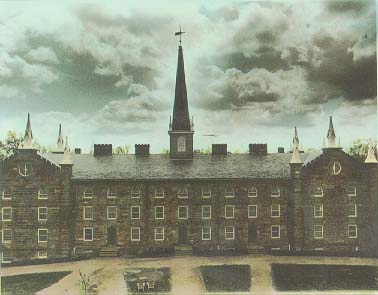![]()
| Debate: |  |
| In the mid 1940s, The faculties of Kenyon College and Bexley Hall Seminary began to discuss what their policy should be in regard to Black students. After some discussion, the faculties both voted unanimously that "the College should admit Negro students on a equality with white students and that this opinion should be conveyed to the Academic Committee of the Board of Trustees by the Faculty representatives to that Committee." | |
|
According to the minutes, the Faculties believed that "a serious institution of higher learning with Church affiliations must take a firm stand on the question of Race Equality." The issue was revisited during 1947. At a meeting of the Academic Committee of Kenyon College, the Board agreed that should the college decide to accept Negroes, the administration would look for two Negroes with with very high qualifications. Committee member Melvin Southworth, however, expressed a dissenting opinion. Southworth claims in his report that he believes Negroes would be unhappy at Kenyon. According to Southworth: "No convincing reason has been advanced as to why Negroes should be admitted to Kenyon College and thus complicate life at Gambier with unnecessary embarrassment for the entire community and for the Negroes themselves." He continues:
|
|
| Click here to read about the first Black Students at Kenyon in the 1950s. | |
| The Commission on the Disadvantaged | |
|
Ruben Pope, student member on the Committee of the Disadvantaged |
Even though eight black students graduated during the 1950s, The debate surrounding Black enrollment at Kenyon returned in the mid-to-late 1960s. There was concern over whether or not aggressively pursuing blacks would lower the academic standards of the entire college. |
| With increased black student activism all over the country, many feared that Black students would become an antagonistic force on the campus, or at best, a self-segregating one. During a student council meeting, students expressed concern that Black students would request separate housing. Some of the few black students on campus, like Ruben Pope and Eugene Peterson, worked with both student government and administration to combat these fears, while still pressing for increase Black representation in the student body. | |
|
Members of the Commission on the Disadvantaged |
||||||||||||||
| They maintained that merely admitting Black students was a good start, but not enough to sustain this presence at Kenyon. Pope argued for efforts that would help Blacks acclimate to Kenyon and also allow them to preserve the cultures that they arrived with in tact. | ||||||||||||||
| To investigate the possibility of recruiting Black students, amongst other objectives, the Chalmers established
the Commission on the Disadvantaged. This committee was assigned to undertake "a thorough study of what Kenyon's
contribution can and should be to a solution of the problems of our disadvantaged people." Some of the major issues explored included implementing scholarships in conjunction with the NAACP to attract qualified Black students, recruiting black faculty from predominately Black institutions like Fisk University, and establishing programs like tutorials to assist black students in acclimation. |
||||||||||||||
| Members of the Commission on the Disadvantaged | ||||||||||||||
|
||||||||||||||
|
|
|
|
Kenyon Collegian Article from 1968 |